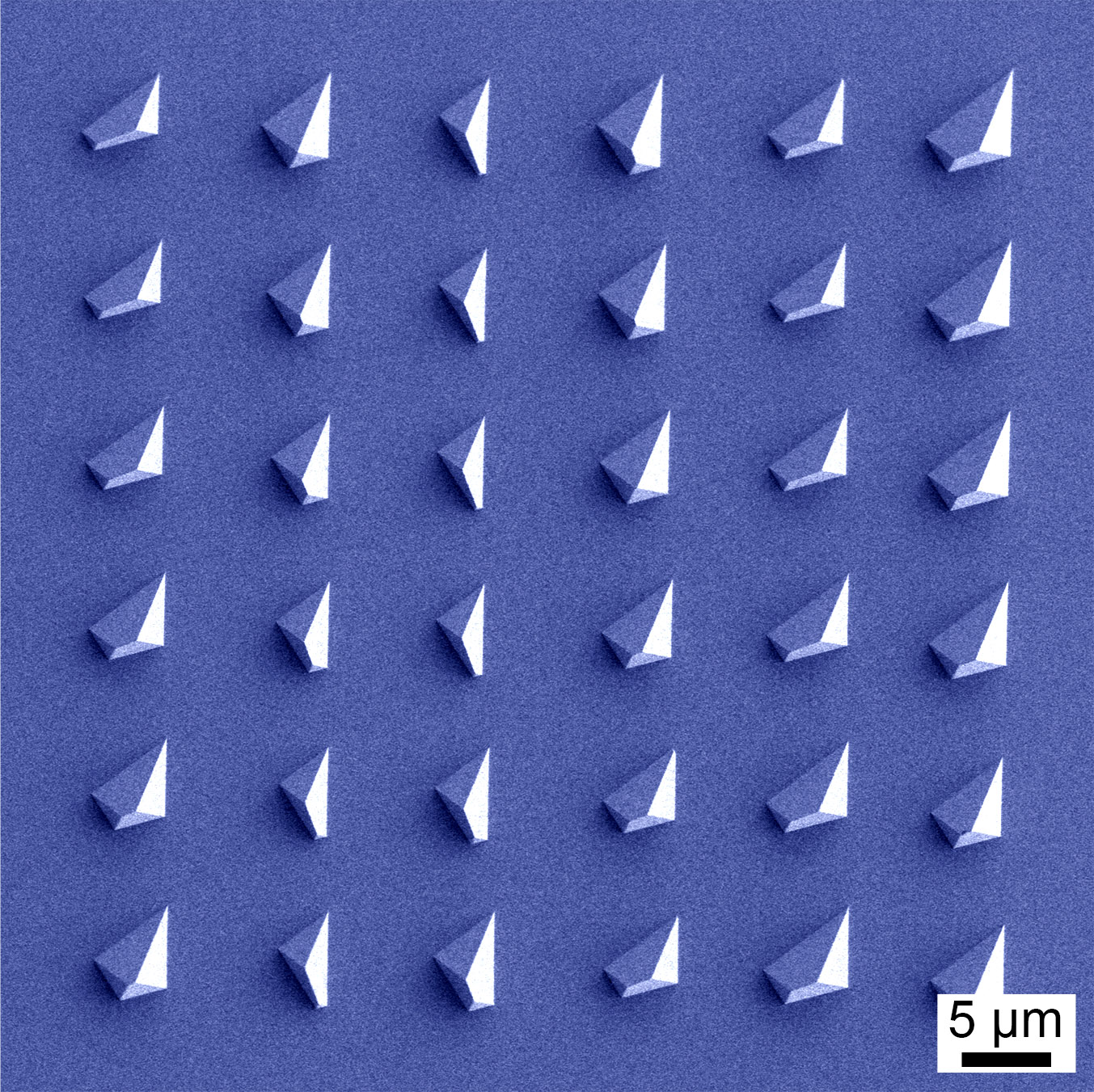Chiral Plasmonics

Objects have a chiral shape if they are not superimposable on their mirror image. Because the human hand is a common example, chirality is often referred to as “handedness.” In this language, chiral objects have a left- and right-handed version. Many biomolecules are chiral (e.g. proteins), and thus chirality is very important in nature. Moreover, because the left- and right-handed versions of the same molecule can have dramatically different properties, including toxicity, it is important to be able to distinguish them.
Light has long been used to detect chirality in molecules. Because surface plasmons can be used to concentrate optical fields in specific locations on a surface, recent research has been trying to exploit these local “hot spots” to detect chiral molecules. In OMEL, we have been developing plasmonic structures to interact with chiral species. We have designed and patterned metallic surfaces with chiral shapes (see figure above) to create novel sensing environments.1 We have also developed experimental methods to detect the chiral nature of electromagnetic fields.2 Current work in the group is also pushing detection schemes forward to enhance detection of chiral molecules.
- McPeak, van Engers, Blome, Park, Burger, Gosálvez, Faridi, Ries, Sahu, & Norris. Complex Chiral Colloids and surfaces via High-Index Off-Cut Silicon. Nano Letters 14, 2934 (2014). (external page Link)
- Poulikakos, Thureja, Stollmann, De Leo, & Norris. Chiral Light Design and Detection Inspired by Optical Antenna Theory. Nano Letters 18, 4633 (2018). (external page Link)